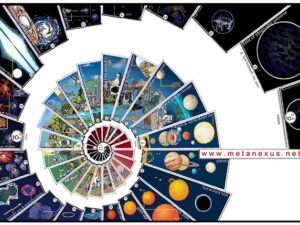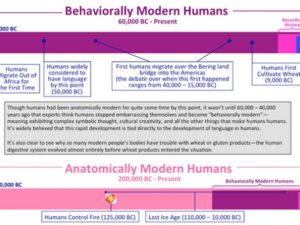History as Science
History is generally considered part of the humanities, a discipline alongside literature and languages, philosophy and the arts. The humanistic study of history focuses on the interpretation of the written word and other cultural artifacts created by humans in ages past. The invention of writing marks the division between “history” and “pre-history.” Writing developed in Mesopotamia and Egypt beginning around 3200 BCE, in the Indus Valley around 2200 BCE, in China around 1300 BCE, and in Mesoamerica around 600 BCE. There are debates about which of these scripts originated independently and which were the result of cultural diffusion.
 Writing evolved originally in the service of agriculture and trade, as well as political and religious elites. And until recently, most writing was from the perspective of these elites, recording the exploits of kings and queens, the great battles won and lost, and the feats and visions of charismatic leaders. The practice and teaching of history typically traces the rise and fall of civilizations, the lineages and deeds of royalty and religions, and sometimes practical matters like ancient medicine and nascent know-how.
Writing evolved originally in the service of agriculture and trade, as well as political and religious elites. And until recently, most writing was from the perspective of these elites, recording the exploits of kings and queens, the great battles won and lost, and the feats and visions of charismatic leaders. The practice and teaching of history typically traces the rise and fall of civilizations, the lineages and deeds of royalty and religions, and sometimes practical matters like ancient medicine and nascent know-how.
With the printing press, new modes of transportation and communication, and the rise of the nation-state, the teaching of history was put in the service of creating national identities. Thus we have French history, Russian history, Chinese history, and so forth down a long list of periods and regions. In the United States, for instance, much public education involves the telling and retelling of American history—the Colonial period, the American Revolution, the writing of the Constitution, the Civil War, and so on into the 21st century—as a civic duty and patriotic project. In many American public schools, world history gets short shrift and human evolution gets no shrift.
Big History takes a different approach, viewing the world and humanity as a whole, beginning deep in human pre-history. It includes primate evolution and paleoanthropology; cognitive evolution and language development; early tool-making and creative expression; the migrations of hunter-gatherers around the world; the domestication of plants and animals; the rise of agriculture and the spread of diseases; the growth in permanent settlements, trade networks, and the use of money; technological innovation and energy consumption; the use of natural resources; and population growth. Exploring Big History requires that we study history first as science, harnessing numerous physical and biological disciplines—archeology, genetics, neuroscience, linguistics, engineering, economics, demography, and more—to systematically collect and analyze information about the past from an evolutionary and global perspective. National and religious histories are all contextualized inside this larger framework.
The Big History approach also involves humanistic interpretation, but on the background of a rich and growing pallet of scientific facts. There are many who hypothesize that this narrative approach to teaching science—from the big bang to today—will help students understand and retain the many details of science and better apply them to the world’s big problems, humanity’s big questions, and the challenges of the future.





